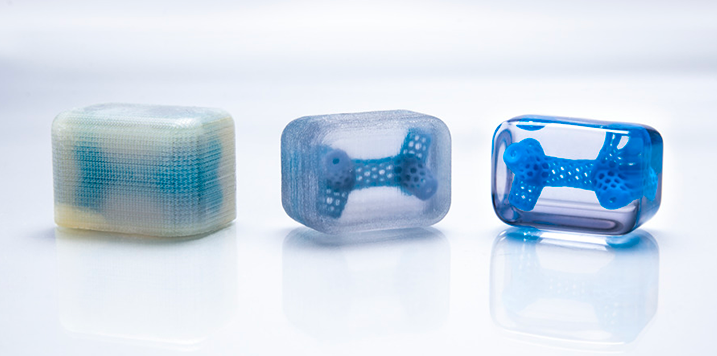 20 July, 2022
20 July, 2022Photopolymer resins make it possible to create high-quality prints of a wide variety of high-precision functional parts, designer objects with extremely intricate structures and more complex prototypes. In the past, manufacturers found it hard to meet the industrial specifications for post-processing 3D printed parts. Up to now, the removal of support structures had to be done by hand. This was not only expensive and gave inconsistent results, but it also risked damaging the parts.
One way of dealing with this dilemma is to use the new C1 system by AM Solutions - 3D post processing technology. This division of Rösler Oberflächentechnik GmbH specialises in offering automated industrial solutions for post-processing and the surface finishing of 3D printed parts. The compact “plug-and-play” machine, especially developed for the automated post-processing of parts printed with photopolymer resins, only needs a 230 V power point. The machine's controls contain a series of processing programs that enable the supports to be removed from parts of different shapes. Furthermore, users can adapt processing programs to their own specific needs. The C1 system can trace 3D printed parts with sizes of up to 340 x 440 x 170 mm (L x W x H).
For post-processing, the parts are placed in a basket which, in turn, is placed in a printing bath filled with a composite precision-adapted to the printing material. Once the corresponding processing program is configured, the process begins. It is based on chemical, thermal and mechanical effects. The effective interaction of these three systems guarantees that the support structures can be eliminated safely without affecting the dimensional integrity of the parts. This applies even to extremely delicate parts with geometrically complex shapes and very intricate areas. In comparison with other systems available on the market, this process is significantly faster.
To develop the composites, AM Solutions - 3D post processing technology, took advantage of the broad technical knowledge of Rösler and the company's chemical laboratory. With this approach, it has been able to develop processing composites suitable for any photopolymer. In contrast to the extremely volatile and flammable isopropanol often used for this purpose, the composites used by AM Solutions are not hazardous and are therefore not required to be classified or labelled as such, according to standard EG nº 1272/2008 (CLP).
The C1 system has several design features that guarantee the stability of the process and minimise operating costs. These include monitoring the fill level of the composite by sensor. As soon as the level drops below the pre-established value, new composite is automatically refilled from the system's special container. A built-in, extractable discharge sieve (for surplus) allows the gelatinous support material to be filtered out of the composite. This significantly increases the useful life of the composite. In addition, a built-in contamination level sensor shows when the composite needs to be changed. This guarantees that this change is not done too soon or too late. This saves on costs and guarantees high quality processing.
As with all the post-processing systems of AM Solutions - 3D post processing technology, the C1 system can be easily integrated into digitalised manufacturing networks. The key parameters of the process, such as temperature, processing time and level of contamination of the composite, are continuously recorded by data recording and can be stored through a USB interface. In this way, the industrial demands pertaining to quality control, the consistency of the process and its traceability, can be fully met in the post-processing of 3D printed parts.
 20 July, 2022Photopolymer resins make it possible to create high-quality prints of a wide variety of high-precision functional parts, designer objects with extremely intricate structures and more complex prototypes. In the past, manufacturers found it hard to meet the industrial specifications for post-processing 3D printed parts. Up to now, the removal of support structures had to be done by hand. This was not only expensive and gave inconsistent results, but it also risked damaging the parts.
20 July, 2022Photopolymer resins make it possible to create high-quality prints of a wide variety of high-precision functional parts, designer objects with extremely intricate structures and more complex prototypes. In the past, manufacturers found it hard to meet the industrial specifications for post-processing 3D printed parts. Up to now, the removal of support structures had to be done by hand. This was not only expensive and gave inconsistent results, but it also risked damaging the parts.